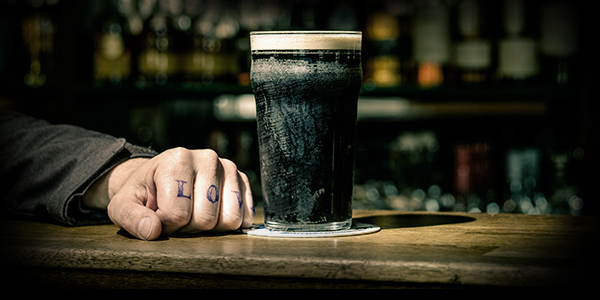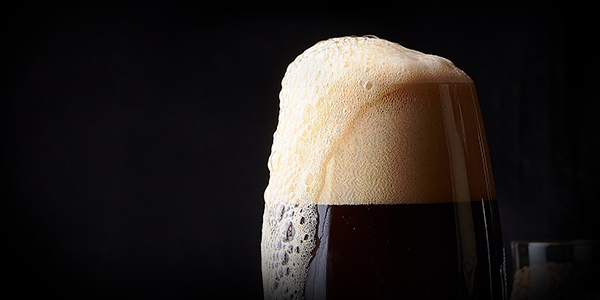While IPAs and sours might be the most popular beer styles today, it was the dark and malty porter—and its cousin, the stout—that took the world by storm in the early 18th century. Consumed far and wide from Britain and Ireland to across the pond in the U.S., porters and stouts were the beers of the people and presidents alike. In fact, George Washington’s beer of choice was said to be a strong porter and he always kept an ample supply of it on hand in his Mount Vernon home in Virginia.
In more recent years, there has been some confusion—or maybe even a beer-fueled debate or two—about what exactly the difference is between these two eerily similar beer styles? Allow us to shed some light on these deliciously dark beers.
Porter
The History
There are essentially two versions of the story on how the porter style came to be. The first goes back to 1722 and Ralph Harwood, owner of Bell Brewery in London. At the time, many people were ordering beer blends at the city’s pubs. These blends were a mix of old stale beer, fresh beer, and a strong beer. Customers often ordered blends of these beers to suit their tastes and their budgets. One such blend was known as “three threads” and it is believed that Harwood brewed his house beer, a porter, to mimic the taste of these popular three threads blends.
The more probable story is that the porters we love today rose out of competition. Around that same 1700s time frame, very early pale ales began to have a strong influence in the market. These strong, pale, hoppy beers moved into the city from the countryside where they were traditionally brewed, and before long, became quite popular. As a result, brewers who were previously making heavy dark ales started to use higher-quality ingredients and added large amounts of hops to the beer. These dark, malty, bitter brews took off in popularity, and by the early 1800s, the name “porter” was adopted for these beers because of the new brew’s immense popularity with the porters who carried goods around the city.

The Styles
Porters have a wide range of flavors and they share many similarities with their darker cousins, stouts. There are few definitive characteristics for porters outside of being dark in color and fairly malt heavy, and because of this, they leave room for brewers to experiment and add notes of coffee or chocolate to the beer by using different malt roasts. Porters can range anywhere from 5 to 9 percent ABV and the hoppiness can vary wildly as well.
The Beer Judge Certification Program breaks all porters down into three substyles:
Brown Porter
A traditionally mild English-style porter. Brown porters generally have low bitterness and are highlighted by chocolate, nutty and toffee flavors.
Robust Porter
These dark beers have a strong, roasted flavor that mimics burnt pumpernickel toast. Robust porters can range from sweet to drying and bitter and typically feature higher ABVs than brown porters.
Baltic Porter
This complex porter originated near the Baltic Sea region. Baltic porters are generally higher in alcohol, sometimes reaching close to 9 percent ABV. Baltic porters feature flavors of dried fruit, figs, liquorish, anise and spicy hops, but they have an added warmth because of the higher added alcohol.

Stout
The History
The abbreviated history of stouts is that there is a lot of overlap between porters and stouts. The word stout has been used to describe a strong black beer as early as 1630. The term was applied synonymously to “stout butt beers” which eventually became known as porter. So, much of the same history of porters can be applied to stouts as well, because for a large period of time, the two beer styles were one in the same. Today, though, the stout category has really come into its own and in doing so has spouted off four sub-styles (not counting barrel-aged stouts).
The Styles
All beers that fall under the stout category have a few things in common, mainly their deep and dark roasty character.
Irish Dry Stout
The Irish dry stout is characterized by the use of roasted barley—instead of roasted black malt—which as a result gives the beer a sharp, coffee-like roastiness that balances out the beer’s sweetness. More modern Irish dry stouts use raw, unmalted barely as well, which gives the beer a very creamy texture. That creaminess from the barley really shines when the beer is served on nitro.
Sweet Stout
Sweet stouts, sometimes called milk stouts, are brewed with the addition of unfermentable milk sugar lactose. The added sugar gives these dessert-like stouts some sweetness, but also a softer body and lower bitterness.
Foreign Extra Stout
These stronger stouts (5.5-8% ABV) are not nearly as prevalent today as they were a few hundred years ago during the peak days of the British Empire. Ironically, because of Britain’s trading routes, the foreign extra stout found its strongest supporters outside of Europe, in Jamaica, Nigeria and the tropics instead.
Imperial Stout
The strongest of all these stouts, these boozy beverages come in at 7-12% ABV, and are often served in a small tulip glass to limit over consumption. Rich and chocolatey, these beers were especially popular with the Russian monarchy through most of the eighteenth century. Many brewers today experiment with this style, either by adding fruit or spices, or aging it in wood barrels.
Now that you’ve seen the light and better understand the difference between stouts and porters, are you ready to add a few new options to your selection? Contact your Breakthru Beverage Sales Consultant to explore which of these is the best for your business.